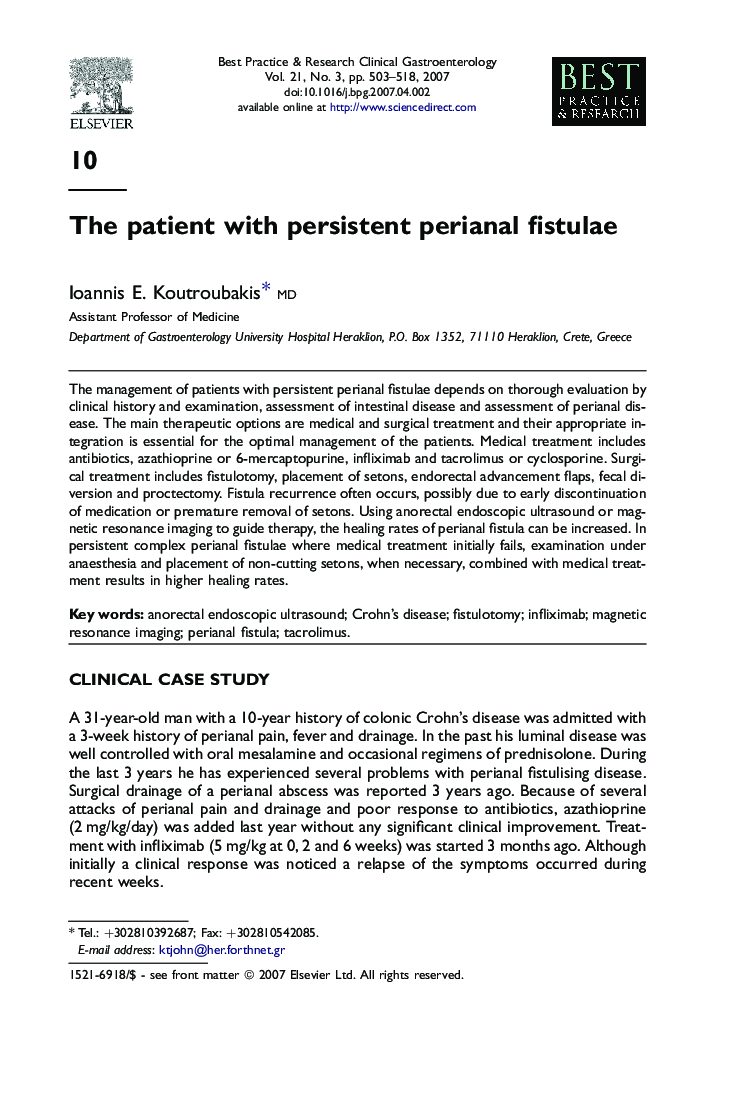| Article ID | Journal | Published Year | Pages | File Type |
|---|---|---|---|---|
| 3254511 | Best Practice & Research Clinical Gastroenterology | 2007 | 16 Pages |
Abstract
The management of patients with persistent perianal fistulae depends on thorough evaluation by clinical history and examination, assessment of intestinal disease and assessment of perianal disease. The main therapeutic options are medical and surgical treatment and their appropriate integration is essential for the optimal management of the patients. Medical treatment includes antibiotics, azathioprine or 6-mercaptopurine, infliximab and tacrolimus or cyclosporine. Surgical treatment includes fistulotomy, placement of setons, endorectal advancement flaps, fecal diversion and proctectomy. Fistula recurrence often occurs, possibly due to early discontinuation of medication or premature removal of setons. Using anorectal endoscopic ultrasound or magnetic resonance imaging to guide therapy, the healing rates of perianal fistula can be increased. In persistent complex perianal fistulae where medical treatment initially fails, examination under anaesthesia and placement of non-cutting setons, when necessary, combined with medical treatment results in higher healing rates.
Related Topics
Health Sciences
Medicine and Dentistry
Endocrinology, Diabetes and Metabolism
Authors
Ioannis E. (Assistant Professor of Medicine),
